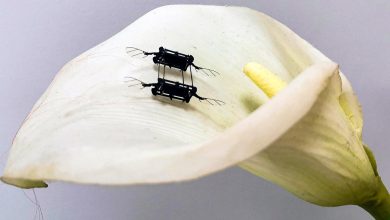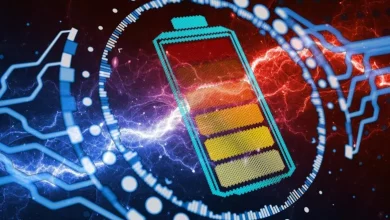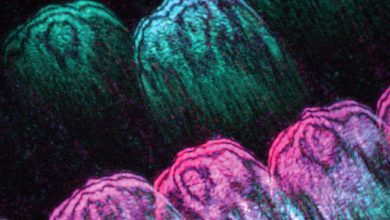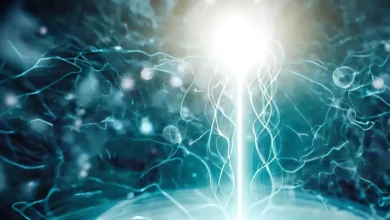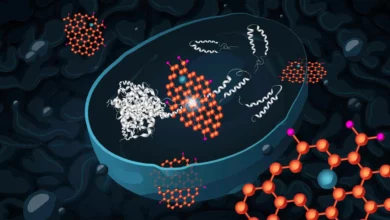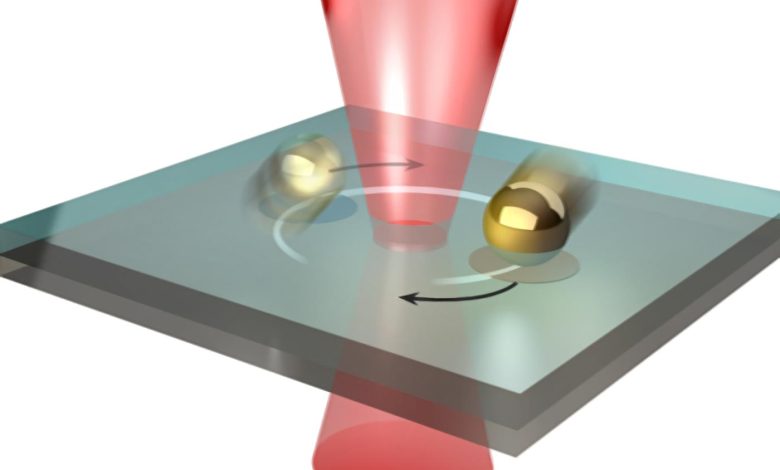
Lead Image: Spinning motors. Credit: The University of Texas at Austin
Motors are ubiquitous in our everyday lives — from cars to washing machines, even if we rarely notice them. A futuristic scientific field is working on the development tiny motors that could power a network of nanomachines and replace some of the power sources we currently use in electronic devices.
Researchers from the Cockrell School of Engineering at The University of Texas at Austin created the first ever solid-state optical nanomotor. All previous iterations of these light-driven motors reside in a solution of some sort, which limited their potential for the majority of real-world applications. This new research was published recently in the journal ACS Nano.
“Life started in the water and eventually moved on land,” said Yuebing Zheng, an associate professor in the Walker Department of Mechanical Engineering. “We’ve made these micro nanomotors that have always lived in solution work on land, in a solid state.”
The scientists envision using these motors to power a wide variety of things. They could be useful for air quality measurement, as the spinning motion could pick up dust and other particles. They could propel drug delivery devices inside the human body. And they could also power tiny drones for surveillance and measurements, as well as other mini-vehicles.
The tiny new motor is less than 100 nanometers wide (for reference, the thickness of a sheet of paper is about 100,000 nanometers), and it can rotate on a solid substrate under light illumination. It can convert light into mechanical energy for various solid-state micro-/nano-electro-mechanical systems as a fuel-free and gear-free engine.
One of the biggest hurdles holding back implementation of these devices is Brownian Motion, which is avoided by bringing these nanomotors on land and out of water, so to speak. Brownian Motion happens when water molecules push these little motors off their spin. The smaller the motor, the stronger effect this motion has. Removing the solution from the equation side steps this problem entirely.
Nanomotors are part of a large and growing field of miniature power sources. They serve as a middle ground in scale between molecular machines at the smaller end and micro-engines at the larger end.
The field is of immense interest, but at this point, researchers are still trying to figure out the fundamental science to make these tiny motors more viable through increased efficiency.
The reason scientists are so enamored with creating these tiny motors is that they mimic some of the most important biological structures. In nature, these motors drive the division of cells and help them move. They combine to help organisms move.
“Nanomotors help us to precisely control the nanoworld and make up new things we want for our real world,” said Jingang Li, a PhD graduate from Zheng’s group and the lead author of this study.
By taking these motors out of the solution and putting them onto chips, they have the potential to replace batteries in some instances, using only light to generate mechanical motion and power devices.
This breakthrough arises from a novel design: a thin layer of phase change material on the substrate. The thin film can undergo a local and reversible change from the solid to a quasi-liquid phase when exposed to light. This phase change can reduce the friction force of the nanomotors and drives the rotation.
This was the team’s first demonstration of the motors using nanoparticles. Going forward, the researchers will continue to improve their creation, working on enhancing performance, by making them more stable and controllable, which leads to converting light to mechanical energy at higher rates.
Reference: “Opto-Thermocapillary Nanomotors on Solid Substrates” by Jingang Li, Pavana Siddhartha Kollipara, Ya Liu, Kan Yao, Yaoran Liu and Yuebing Zheng, 20 May 2022, ACS Nano.
DOI: 10.1021/acsnano.1c09800
Other team members include: from mechanical engineering Pavana Siddhartha Kollipara and Kan Yao; Yaoran Liu from the Department of Electrical and Computer Engineering and Ya Liu from Xi’an Jiaotong University in China. The research was funded through grants from the National Institutes of Health and National Science Foundation.

